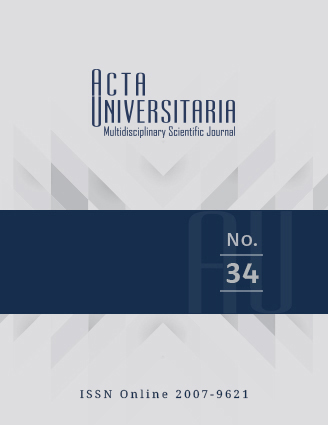Published 2024-09-18
How to Cite
Abstract
This study recognizes and identifies the existence of a bequest motive (BM) closely related to forest conservation in forest communities with forest logging. This was based on a contingent valuation standard survey of households living in two contrasting forest communities. Results show that between 71% and 83% of heads of households declared their willingness to endure an altruistic sacrifice so that their children can enjoy the forest resources available in the communities. Variables such as age, gender, income, education, and forest type are closely related to BM. The variations of these determinants depend on the payment vehicle. The main difference between communities is that the greater the benefits they receive from the forest resources they own the greater the bequest value they possess. The findings are important because they identify that even poor households are willing to make an altruistic sacrifice for the enjoyment of the forest for future generations.
References
- Amacher, G. S., Koskela, E., Ollikainen, M., & Conway, C. (2002). Bequest intentions of forest landowners: theory and empirical evidence. American Journal Of Agricultural Economics, 84(4), 1103-1114. https://doi.org/10.1111/1467-8276.00371
- Bray, D., & Merino, L. (2004). La experiencia de las comunidades forestales en México: Veinticinco años de silvicultura y construcción de empresas forestales comunitarias. Instituto Nacional de Ecología.
- Bray, D. (2020). Mexico’s Community Forest Enterprises: Success on the Commons and the Seeds of a Good Anthropocene. University of Arizona Press.
- Conway, M. C., Amacher, G. C., Sullivan, J., & Wear, D. (2003). Decisions non-industrial forest landowners make: an empirical examination. Journal of Forest Economics, 9(3), 181-201. https://doi.org/10.1078/1104-6899-00034
- Cummings, R. G., & Harrison, G. W. (1995). The measurement and decomposition of nonuse values: a critical review. Environmental and Resource Economics, 5, 225-247. https://doi.org/10.1007/BF00691518
- Diafas, I., Barkmann, J., & Mburu, J. (2017). Measurement of bequest value using a non-monetary payment in a choice experiment—The case of improving forest ecosystem services for the benefit of local communities in rural Kenya. Ecological Economics, 140, 157-165. https://doi.org/10.1016/j.ecolecon.2017.05.006
- Durán, E., Bray, D. B., Velázquez, A., & Larrazábal, A. (2011). Multi-scale forest governance, deforestation, and violence in two regions of Guerrero, Mexico. World Development, 39(4), 611-619. https://doi.org/10.1016/j.worlddev.2010.08.018
- Kahneman, D., Ritov I., Schkade, D., Sherman, S. J., & Varian, H. R. (1999). Economic preferences or attitude expressions?: An analysis of dollar responses to public issues. In B. Fischhoff & C. F. Manski (eds.), Elicitation of preferences (pp. 203-242). Springer. https://doi.org/10.1007/978-94-017-1406-8_8
- Knudsen, C., Rigby, D., Yadav, A., & Global, I. P. E. (2018). Willingness to pay versus willingness to work: Does NREGA Target Women?. IPE Global Limited.
- Lindhjem, H., & Mitani, Y. (2012). Forest owners’ willingness to accept compensation for voluntary conservation: a contingent valuation approach. Journal of Forest Economics, 18(4), 290-302. https://doi.org/10.1016/j.jfe.2012.06.004
- Lockwood, M., Loomis, J. & DeLacy, T. (1993). A contingent valuation survey and benefit cost analysis of forest preservation in east Gippsland, Australia. Journal of Environmental Management, 38(3), 233-243. https://doi.org/10.1006/jema.1993.1042
- Mallawaarachchi, T., Blamey, R. K., Morrison, M. D., Johnson, A. K. L., & Bennett, J. W. (2001). Community values for environmental protection in a cane farming catchment in Northern Australia: a choice modeling study. Journal of Environmental Management, 62(3), 301-316. https://doi.org/10.1006/jema.2001.0446
- O’Garra, T. (2009). Bequest values for marine resources: how important for indigenous communities in less-developed economies?. Environmental and Resource Economics, 44(2), 179-202. https://10.1007/s10640-009-9279-3
- Oleson, K. L. L., Barnes, M., Brander, L. M., Oliver, T. A., van Beek, I., Zafindrasilivonona, B., & van Beukering, P. (2015). Cultural bequest values for ecosystem service flows among indigenous fishers: a discrete choice experiment validated with mixed methods. Ecological Economics, 114, 104-116. https://doi.org/10.1016/j.ecolecon.2015.02.028
- Pearce, D. (1993). Blueprint 3: measuring sustainable development. CSERGE, Earthscan Publications.
- Popp, D. (2001). Altruism and the demand for environmental quality. Land Economics, 77(3), 339-349. https://doi.org/10.2307/3147128
- Riddel, M., & Shaw, W. D. (2003). Option wealth and bequest values: the value of protecting future generations from health risks on nuclear waste storage. Land Economics, 79(4), 537-548. https://doi.org/10.2307/3147298
- Tahvonen, O. (1998). Bequests, credit rationing and in situ values in the Faustmann-Pressler-Ohlin forestry model. Scandinavian Journal of Economics, 100(4), 781-800. https://doi.org/10.1111/1467-9442.00136
- Thompson, D. W., & Hansen, E. N. (2012). Factors affecting the attitudes of nonindustrial private forest landowners regarding carbon sequestration and trading. Journal of Forestry, 110(3), 129-137. https://doi.org/10.5849/jof.11-010
- Torres-Rojo, J. M., Guevara, A., & Bray, D. B. (2005). The managerial economics of Mexican community forestry. In D. Bray, L. Merino, & D. Barry (eds.), The community forests of México: managing for sustainable landscapes (pp. 273-304). University of Texas Press.
- Torres-Rojo, J. M., Moreno-Sánchez, R., & Amador-Callejas, J. (2019). Effect of capacity building in alleviating poverty and improving forest conservation in the communal forests of Mexico. World Development, 121, 108-122. https://doi.org/10.1016/j.worlddev.2019.04.016
- Velázquez, A., Durán, E., Ramı́rez, I., Mas, J. F., Bocco, G., Ramı́rez, G., & Palacio, J. L. (2003). Land use-cover change processes in highly biodiverse areas: the case of Oaxaca, Mexico. Global Environmental Change, 13, 3, 175-184.


